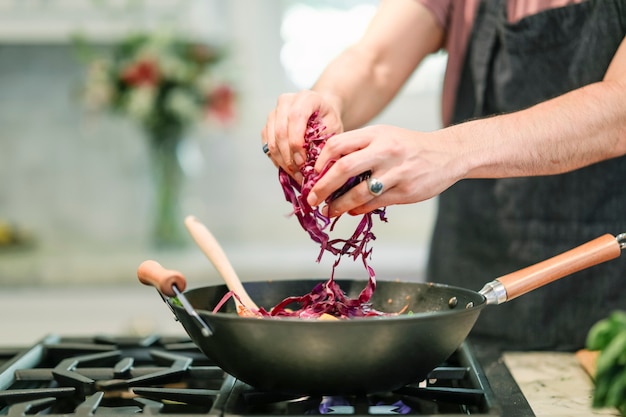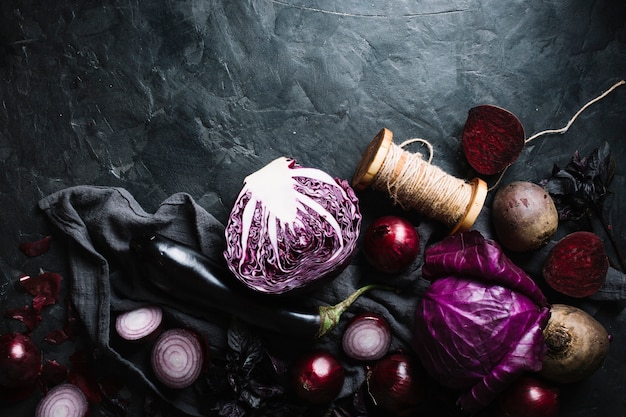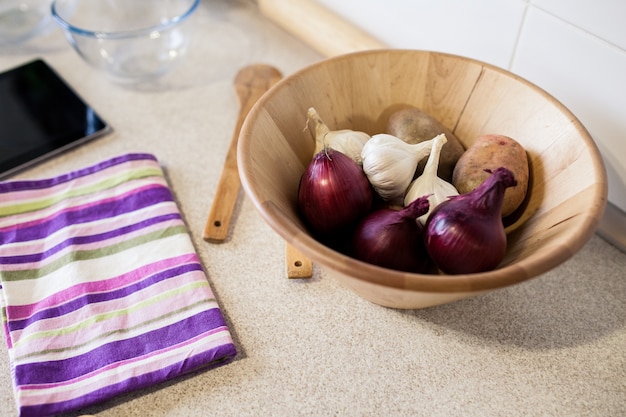Let's be honest, beets have a bit of a reputation. They're often relegated to the "weird veggie" category, but trust me, these vibrant root vegetables deserve a second look. They're incredibly versatile, capable of transforming from earthy and sweet to tangy and vibrant, depending on how you treat them. I've been cooking with beets for years, and there's a world of deliciousness waiting to be explored beyond the classic boiled beetroot salad. From the simple joy of roasting to the satisfying crunch of a pickled beet, this guide will walk you through every step of the beet journey, sharing my personal tips and tricks along the way.
Part 1: Getting to Know Your Beets

Choosing the Perfect Beets
The first step, of course, is picking the right beets. I always head for the freshest produce section, looking for beets that are firm to the touch. The skin should be smooth and unblemished, without any soft spots or signs of decay. The colour is a good indicator too – a deep, vibrant red or burgundy usually means a sweeter beet. You'll also want to consider the size. Smaller beets are perfect for pickling, while larger ones are great for roasting or making salads.
Remember, the leaves are edible too, so pick a bunch with fresh, crisp greens. I love using them in salads or adding them to soups for a bit of earthy flavour.
Storing Beets
Once you've got your beets home, you'll want to store them properly to keep them fresh. The best place is the crisper drawer of your fridge, where it’s cool and dark. They'll last for a couple of weeks this way. If you’re planning to use the leaves, store them separately as they’ll wilt faster than the roots.
Part 2: Prepping Beets for Cooking

Cleaning and Trimming
Before you get cooking, give your beets a good scrub with a vegetable brush to remove any dirt. This is especially important if you’re planning to roast them with the skin on. Trim off the leafy greens, leaving about an inch of stem attached. If you’re using the greens, wash them separately.
Peeling or Not?
Ah, the age-old question! Personally, I prefer to roast beets with their skin on. It helps retain moisture and flavour, and the skin slips off easily once they’re cooked. Plus, it's one less step in the process. But if you're feeling fancy, or need to make things look extra presentable, you can definitely peel them before cooking. Just make sure you use a sharp knife or peeler to avoid any tough bits.
Part 3: Roasting Beets to Perfection

The Roasting Method
Roasting brings out the natural sweetness of beets and creates a wonderfully tender texture. It’s a simple process, but a few key steps can make all the difference. Preheat your oven to 180°C (350°F). Wrap your beets in foil, leaving a little space for steam to circulate. This creates a little steam bath inside, which helps the beets cook evenly. Pop them onto a baking sheet and roast for about an hour, or until they’re tender when pierced with a fork.
Tips for Roasting
Here are a few tips to elevate your roasted beets:
- If you're looking to speed up the roasting process, try wrapping the beets in damp kitchen paper before putting them in the foil. The moisture will help them cook faster.
- To make the most of your roasted beets, you can add a few other ingredients to the foil packet before roasting. Some of my favourites include sprigs of rosemary, garlic cloves, or a drizzle of olive oil. This adds a delicious layer of flavour to the beets.
- Once your beets are cooked, let them cool slightly in the foil before peeling. The steam will help loosen the skin, making it easier to remove.
- If you're short on time, you can also roast beets in a preheated cast iron skillet. This method will take about 30 minutes and results in slightly caramelized beets.
Part 4: The Art of Pickling Beets
Why You Should Pickle Beets
Pickling transforms beets into an incredibly addictive snack or condiment. The tangy vinegar and spices bring out the earthy sweetness of the beet, adding a delightful burst of flavour. I love pickled beets as a side dish, on charcuterie boards, or even in salads. They add a unique texture and a vibrant colour pop.
A Simple Pickling Recipe
Here's my go-to pickling recipe, perfect for beginners:
Ingredients:
- 1 kg small beets, peeled and quartered
- 2 cups white vinegar
- 1 cup water
- 1/2 cup sugar
- 1 teaspoon salt
- 1 teaspoon black peppercorns
- 1 bay leaf
Instructions:
- Place the beets in a saucepan and cover with water. Bring to a boil, then reduce heat and simmer for 15-20 minutes, or until tender. Drain the beets and set aside. This pre-boiling step helps to soften the beets and makes them easier to pickle.
- In a separate saucepan, combine the vinegar, water, sugar, salt, peppercorns, and bay leaf. Bring to a boil, then reduce heat and simmer for 5 minutes. This creates the pickling brine, which will infuse the beets with flavour.
- Pour the hot pickling liquid over the beets, ensuring they’re fully submerged. Let cool completely, then refrigerate for at least 24 hours before enjoying. Allowing the beets to cool in the brine allows the flavours to fully develop.
Pickling Variations
Once you've mastered the basics, you can experiment with different flavours and spices. Try adding:
- A teaspoon of mustard seeds for a bit of extra heat
- A pinch of cinnamon or cloves for a warm, spiced flavour
- A few sprigs of dill for a fresh, herbaceous note
- A splash of red wine vinegar for a more complex flavour profile
Part 5: Beyond the Basics: More beet recipes
A Rainbow of Beet Dishes
The world of beets is vast and delicious! Here are just a few of my favourite ways to use these versatile vegetables:
beetroot and goat cheese salad
The sweetness of roasted beets pairs perfectly with the tangy creaminess of goat cheese. Add some toasted walnuts and a drizzle of honey vinaigrette for a truly decadent salad. This salad is a beautiful and delicious way to showcase the flavour of roasted beets.
beetroot hummus
Give your hummus a vibrant twist by blending in some cooked beetroot. It adds a lovely colour and a subtle earthy sweetness. This is a great way to use up leftover roasted beets. Serve it with pita bread, crackers, or vegetables.
Beetroot and Chocolate Cake
Yes, you read that right! The earthy notes of beet are surprisingly complementary to chocolate, adding a depth of flavour and a beautiful maroon hue. This cake is a real conversation starter and a delicious way to surprise your guests.
Beetroot Risotto
Add a burst of colour and flavour to your risotto by incorporating finely diced beetroot into the cooking process. The beets will impart a sweet, earthy flavour to the rice and create a vibrant, Instagram-worthy dish.
beetroot soup
For a comforting and healthy meal, try making a smooth and creamy beetroot soup. You can add a touch of cream or coconut milk for richness and garnish with fresh herbs for a touch of elegance.
Part 6: Beetroot for Your Health
nutritional powerhouse
Beets are packed with vitamins, minerals, and antioxidants. They’re a great source of folate, potassium, and fiber, and are known to improve blood pressure and boost athletic performance. Here are some of the key health benefits of beets:
- Rich in Nitrates: Beets are high in nitrates, which are converted into nitric oxide in the body. Nitric oxide helps to relax blood vessels, improving blood flow and reducing blood pressure.
- Support Athletic Performance: Studies have shown that beetroot juice can improve endurance and reduce oxygen consumption during exercise. This is due to the increased blood flow and oxygen delivery to the muscles.
- Promote Liver Health: Beets contain antioxidants that help protect the liver from damage.
- Support Digestion: The fiber in beets promotes regular bowel movements and aids in digestion.
- Boost Immunity: Beets are a good source of vitamin C, an important antioxidant that supports immune function.
Beetroot Juice
Freshly juiced beetroot is a popular way to reap the benefits of this healthy vegetable. It’s packed with nitrates, which have been linked to improved blood flow and endurance. You can make beetroot juice at home using a juicer or simply blend beets with water and strain the mixture.
Part 7: Exploring Beet Variations
golden beets
While red beets are the most common, there are other varieties, like golden beets. They have a milder flavour than red beets and a lovely golden hue that adds a touch of elegance to any dish. Try using them in salads, roasting them with herbs, or adding them to soups for a subtle sweetness and a beautiful golden colour.
beetroot greens
Don’t forget the greens! They’re packed with nutrients and make a delicious addition to salads, soups, and stir-fries. Their slightly sweet, earthy flavour pairs well with other leafy greens. Try sautéing them with garlic and olive oil, or adding them to a smoothie for a nutrient boost.
Part 8: Beet Tips and Tricks
Getting Rid of the Beetroot Stain
Beets can leave a stubborn stain on your hands and clothes. Here are a few tips to combat the beetroot stain:
- Lemon Juice: Rub a little lemon juice on the stained area, and the citric acid will help to lift the stain.
- Baking Soda: Make a paste of baking soda and water and apply it to the stain. Let it sit for a few minutes, then rinse thoroughly.
- Vinegar: White vinegar is another good stain remover. Soak the stained item in a mixture of white vinegar and water for a few hours, then wash as usual.
- Commercial Stain Remover: For stubborn stains, you can try a commercial stain remover specifically designed for food stains.
Storing Pickled Beets
Once your beets are pickled, they’ll keep well in the fridge for several weeks. Just make sure they’re fully submerged in the pickling liquid to prevent them from spoiling. You can store them in a glass jar with a tight-fitting lid.
Part 9: FAQs
1. What is the best way to cook beets?
Roasting is my favourite way to cook beets, as it brings out their natural sweetness and creates a tender texture. However, you can also boil, steam, or even microwave them. Boiling beets is a quick and easy method, but it can sometimes result in a slightly mushy texture. Steaming beets is a healthier option that retains more nutrients, and microwaving can be a time-saver. The best method really depends on your personal preference and the recipe you're making.
2. Can you eat beetroot skin?
Yes, beetroot skin is edible! It's packed with nutrients, and some people find it has a slightly earthy flavour. If you're roasting beets, you can leave the skin on and it will slip off easily once they're cooked. But if you're making a salad or using beets in a recipe where you need a smooth finish, it's best to peel them.
3. How do I know when beets are cooked?
Beets are cooked when they're tender when pierced with a fork. You can also check by gently squeezing the beet; if it yields easily, it's done. The cooking time can vary depending on the size of the beets and the cooking method used.
4. What can I do with leftover beets?
Leftover beets are incredibly versatile! You can add them to salads, sandwiches, soups, dips, or even use them to make a delicious beetroot hummus. They can also be added to smoothies for a boost of nutrients and colour.
5. Are beets good for you?
Yes, beets are a nutritional powerhouse! They're packed with vitamins, minerals, and antioxidants. They're a great source of folate, potassium, and fiber, and are known to improve blood pressure and boost athletic performance. Beets are a delicious and nutritious addition to any diet.
And that’s it! I hope this comprehensive guide has inspired you to explore the wonderful world of beets. Whether you’re a seasoned chef or a cooking novice, there’s a beet recipe out there waiting to become your new favourite. So get out there, pick up some beets, and get creative!
Everyone is watching

Prime Rib Roast Cooking Time Chart: Per Pound Guide
Cooking TipsPrime rib roast. Just the name conjures images of lavish dinners, crackling fires, and hearty laughter. It’s ...

How Long to Bake Potatoes in the Oven (Perfect Every Time)
Cooking TipsBaked potatoes are a staple in my kitchen. They're incredibly versatile, delicious, and surprisingly easy to m...

Perfect Rice Every Time: The Ultimate Guide to Cooking Rice
Cooking TipsAs a self-proclaimed foodie, I've always been a bit obsessed with rice. It's the foundation of countless cuisi...

The Ultimate Guide to Cooking Asparagus: Tips, Techniques, and Recipes
Cooking TipsAsparagus. The mere mention of this spring delicacy conjures up images of vibrant green spears, crisp and burs...

Ultimate Guide to Cooking the Perfect Thanksgiving Turkey
Cooking TipsThanksgiving. Just the word conjures up images of overflowing tables laden with delicious food, the scent of r...
